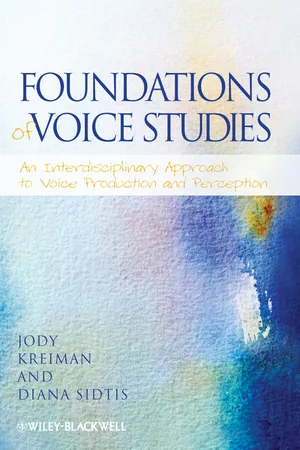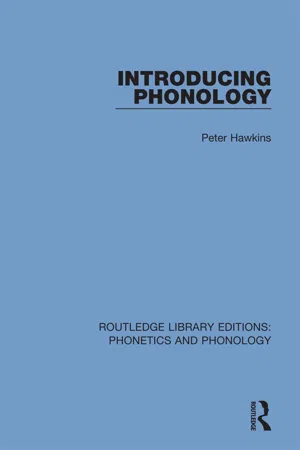Languages & Linguistics
Serious vs Humorous Tone
A serious tone in language and linguistics conveys a formal, authoritative, or somber attitude, often used in academic or professional settings. On the other hand, a humorous tone is lighthearted, playful, and intended to evoke laughter or amusement. These tones can significantly impact the overall message and reception of communication.
Written by Perlego with AI-assistance
Related key terms
Related key terms
1 of 4
Related key terms
1 of 3
4 Key excerpts on "Serious vs Humorous Tone"
- eBook - ePub
Humor in the Classroom
A Guide for Language Teachers and Educational Researchers
- Nancy Bell, Anne Pomerantz(Authors)
- 2015(Publication Date)
- Routledge(Publisher)
Education, and in particular language education, is serious business, but as we have seen throughout this book humor does have something very important to teach us about how language is used and to contribute to how it is taught and learned in classrooms. Humorous language—whether spoken or written—is, by its very nature, polysemous and ambiguous. Its meanings are embedded in multiple layers of context and are always negotiated within and through interaction. What is funny to one person may be lost on another. And, although it might seem like such characteristics are particular to humor, we have argued that this is not the case. Much of what we have said about the workings of humor applies to language and communication more broadly, and the historic omission of non-serious language in educational research has serious consequences for how we understand language use and indeed even language learning in classroom contexts. We have thus argued that language educators, educational researchers, and policy makers would do well to think about some of the changes brought about by globalization and new technologies not as a challenge to be overcome but, rather, as an opportunity to rethink some of the ideas that have long dominated our practices.In highlighting the workings of humor, we note that much of what makes non-serious language use interesting to researchers, is also what makes it so appealing to language users. Humor is, as we saw, difficult to categorize and even harder to interpret. A single instance of humor can be used to accomplish multiple social functions at once, and not all participants will necessarily recognize the work being done. Yet, humor is, for many of us, a familiar and frequently present form of language use. To neglect the teaching of humor is to deny developing bilinguals access to a powerful communicative resource, potentially contributing to their marginalization during this type of talk. On the other hand, exposing students to the workings of non-serious interaction can provide them with additional tools for navigating complex social relationships and social situations. It can further the goal of learners seeing themselves not as “faithful imitators” whose sole job it is to parrot preformed utterances (Gao, 2014) but as active creators of meaning, whose innovative and playful manipulations of language come to shape the very code they are using. - eBook - ePub
Foundations of Voice Studies
An Interdisciplinary Approach to Voice Production and Perception
- Jody Kreiman, Diana Sidtis(Authors)
- 2011(Publication Date)
- Wiley-Blackwell(Publisher)
Approaches to sarcasm and irony based on acoustic analyses alone may obscure subtle dimensions of meaning or lead to wrong conclusions. For example, actor-based studies of English speakers suggested that there are consistent cues that indicate a speaker is being sarcastic or ironic (dropping or lowered pitch, louder, slower speech, reduced pitch variability; Cheang and Pell, 2008), and listeners can discern the “dripping irony” that characterizes most acted portrayals as perceptually distinct from nonironic speech when speakers intend to communicate the contrast between ironic and literal meanings (Bryant and Fox Tree, 2005). However, studies of spontaneously occurring irony and sarcasm showed that despite some acoustic differences (Rockwell, 2007), listeners cannot reliably distinguish dryly ironic utterances from nonironic utterances without the help of contextual cues. That is, spontaneously emitted ironic utterances presented in isolation were not well recognized as ironic, while “posed” versions, or those presented as citation forms, were (Rockwell, 2000). When sarcasm was identified, acoustic cues were slower tempo, higher intensity, and lowered pitch. In real life, rhetorical devices, such as implausible exaggeration, repetition or hyperbole, serve along with tone of voice as potent cues to irony (Kreuz and Roberts, 1995). Thus, although studies that depended on acting do reveal a consistent “ironic tone of voice” (which indicates that native speakers know these prosodic cues), studies of naturally occurring irony suggest that verbal context usually provides critical information in most cases. Other factors contribute in naturalistic settings, but knowledge of the prosodic cues that signal these subtle meaning differences appears to be part of the native speaker’s competence. Note that in a comparison of written and verbal ironic exemplars, irony was better discerned by listeners than readers (Bryant and Fox Tree, 2002). A similar perceptual disparity has been found for idiomatic versus literal meanings of ditropic sentences (those with this special ambiguity) such as “It broke the ice.” When embedded in paragraphs read aloud with contextually generated literal or idiomatic interpretations, and then excised for a listening task, utterances carrying these disparate meanings were not distinguishable (Van Lancker and Canter, 1981). In a second study, when speakers were instructed to produce ditropic utterances with one or the other meaning intended, listeners performed extremely well on the discrimination task (Van Lancker, Canter, and Terbeek, 1981).Figure 8.15The diving mules news report: The day after.The sensitivity of listeners to ironic tone can lead to all kinds of consequences. Figure 8.15 depicts a cartoon that was inspired by an actual incident, reported on August 9, 2007, in an article entitled “High-Diving Mule Act Concerns Animal Activists” (San Antonio, Associated Press). Newscasters had reported a story about diving mules at a carnival, using a droll, amused tone while presenting, to them, a “fluff” piece of journalism. Animal rights activists were not amused, and complained that the style of presentation made fun of animal abuse. The next evening, the news station issued an apology – for the tone in which the story was reported.The masterpiece of prosodic management appears in humor. It’s often been said that joke telling is all in the timing, and, indeed, decelerations and accelerations belong intimately to the structure of verbal humor. Articulatory rate speeds up toward the end of a punch line. (This is one of the reasons that jokes are especially difficult to grasp in a second language). Using prosody, nuances and attitudes are manipulated by the stand-up comic as if on a high wire. Subtle changes in voice quality are of paramount effect in humor, but this is a woefully understudied topic, especially given the popularity of sitcoms, movies, late night television shows, comedy clubs, and internet material, not to mention humorous moments in daily interaction, a great source of pleasure (or pain) for us all. One exception to the dearth of scientific study of prosody in humor comes from a study analyzing speech from a well-known television sitcom, Friends - eBook - ePub
- Peter Hawkins(Author)
- 2018(Publication Date)
- Routledge(Publisher)
in addition the tones can be used to make lexical distinctions.2 Intonation is functional, i.e. it is used in a language for particular purposes and is never merely ‘decorative’ nor a way of avoiding speech becoming ‘monotonous’.3 Within any particular language, intonation is systematic; different speakers use the same patterns for the same purposes, though there may be (and usually are) dialect differences, just as segmental phonemes are systematic in the language as a whole, but each phoneme may be subject to different realizations according to the region, age, sex, etc. of the speaker.The functions of intonation in EnglishWe can group the functions of intonation under four general headings. Intonation serves:1 To structure the information content of a sentence so as to show which information is new or cannot be ‘taken for granted’, as against information which the listener is assumed to possess or to be able to acquire from the context (i.e. ‘given’ information). This is explained further below (pp. 199ff.)2 To determine the speech-function of a sentence, i.e. to indicate whether the sentence is intended as a statement, question, command, etc. (see below, p. 204).3 To convey connotational meanings of ‘attitude’ such as surprise, annoyance, enthusiasm, etc. This can include whatever meanings are intended, over and above the meanings conveyed by the lexical items and the grammatical structure. For example the sentence:thanks for helping me last nightcan be given more than one meaning. The difference between a ‘sincere’ intention and a ‘sarcastic’ one would be conveyed by the intonation. Note that in the written form, we are given only the lexis and the grammar. The written medium has very limited resources for marking intonation, and the meanings conveyed by it have to be shown, if at all, in other ways.4 To characterize a particular style or variety of the language (the stylistic - eBook - ePub
- Walter Nash(Author)
- 2014(Publication Date)
- Routledge(Publisher)
SevenLanguage in its humour: (i) manipulations of meaning 7.1 ‘Layering’We may ask – the question has haunted several chapters – whether ‘the language of comedy’, ‘the language of humour’, and ‘humorous language’ are equivalent expressions? Do comic style and structure necessarily imply a profusion of jokes and witticisms? To pose the question in this way is perhaps to answer it. We imply that ‘the language of comedy’ may be quite unremarkable, sentence for sentence – may, indeed, be deliberately banal – but that ‘the language of humour’, and certainly ‘humorous language’ must always be characterized by a tension attributable to devices latent in the linguistic system, possibilities realized by language in its humour. What possibilities, then? And how are they realized?First, as we have noted elsewhere, jesting language is frequently ‘layered’, working its effects combinatively through sounds, through vocabulary, and through grammar and syntax. In this convergence of linguistic elements, it resembles – obviously – the language of poetry. As an example, let us consider possible transformations of a sentence not in itself strikingly humorous:1. My watch fell into the river. From this emerges, with a little playful tinkering: 2. My timepiece toppled into the Thames. And again: 3. Into the Thames toppled my timepiece.Although it is begging the question to assert that 2 and 3 are humorous, readers will at least recognize a facetious intent, manifested through peculiar intensities of linguistic patterning. We note, for instance, the alliteration of ‘timepiece’, ‘topple’, and ‘Thames’, a joking impulse in the management of sound. This, however, is obviously not the whole joke. The sounds are linked with significant lexical items, timepiece and topple, which strike the native observer as in some way out of the ordinary. Timepiece, he thinks, is a funny way of saying ‘watch’, and topple is a whimsical expression of ‘fall’ There is an oddity, he might add, in the juxtaposition, or collocation, of these two words as exponents of ‘actor’ and ‘action’. Trees topple; dynamited chimneys topple; slain giants topple; governments topple; even theories topple; but not timepieces of the wrist- or pocket-watch variety. Evidently there is something distinctive about the recasting in 2 and 3, not only in terms of sound, but also in the lexicon. Version 3 presents a further point of distinction. Here the syntax of the basic sentence is changed, so that the adjunct into the Thames is moved into a position at the beginning of the clause, while the subject My timepiece goes to the end of the sentence, after the verb. This inversion has an effect of rhetorical heightening and suspense, the kind of effect a raconteur might seek in shaping the performance of a joke. In version 3, then, the element of a distinctive syntax is incorporated with a distinctive lexicon and a distinctive pattern of sound. This humorous language is thus layered
Index pages curate the most relevant extracts from our library of academic textbooks. They’ve been created using an in-house natural language model (NLM), each adding context and meaning to key research topics.
Explore more topic indexes
Explore more topic indexes
1 of 6
Explore more topic indexes
1 of 4



